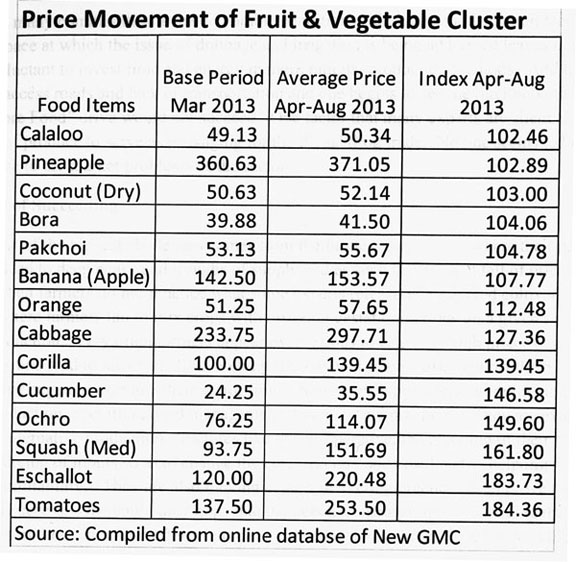Reliable data is very important for conducting analysis and for making good decisions. One source of reported data is the annual report of the Bank of Guyana, which has been publishing information compiled either by itself or by other entities such as the Statistical Bureau and the Ministry of Agriculture. It has been doing this for many years and one has to believe that with the scrutiny that its work gets from multilateral financial institutions, the Bank of Guyana seeks to ensure that the information contained in its reports meets the integrity test. It is the reason that this writer relies on information in the various reports published by that institution. Much use is made of the Bank’s annual report in which could be found statistics on domestic output of many products. Of particular interest is the condition of the agricultural sector where the data suggest that sugar might not be the only thing in crisis.
Economic diversification
In 2008, Guyana embarked on a ‘Grow More Food’ campaign in an effort to reverse the downward trend in food output that became quite noticeable after 2000. Couched in a framework of economic diversification, the focus has been on the “non-traditional” commodities since the products that make up this part of the agricultural sector never had the same status as sugar under colonial rule. A wide range of products forms part of the non-traditional agricultural sector and are grouped into three clusters, namely aquaculture, livestock and fruits and vegetables. Aquaculture speaks for itself and deals with fish farming. Livestock, according to data from the New Guyana Marketing Corporation (NGMC), emphasizes three types of meat, namely beef, chicken and pork, and eggs. The largest cluster is that of other crops which consists of 18 types of fruit, five types of root crop, one type of legume, five types of seasoning, and 12 types of vegetable. Each grouping of food is reported on by the Bank of Guyana, even though not all of the products are included in the production index.
Halo of positive growth
The effort to revive agriculture might be facing serious difficulties that are not being addressed with fierce urgency by the administration. Instead, the troubles of the industry are being shrouded in a halo of positive growth statistics trotted out in the annual national budget report. The non-traditional sector reportedly grew by 7.7 per cent in 2008 and has not

